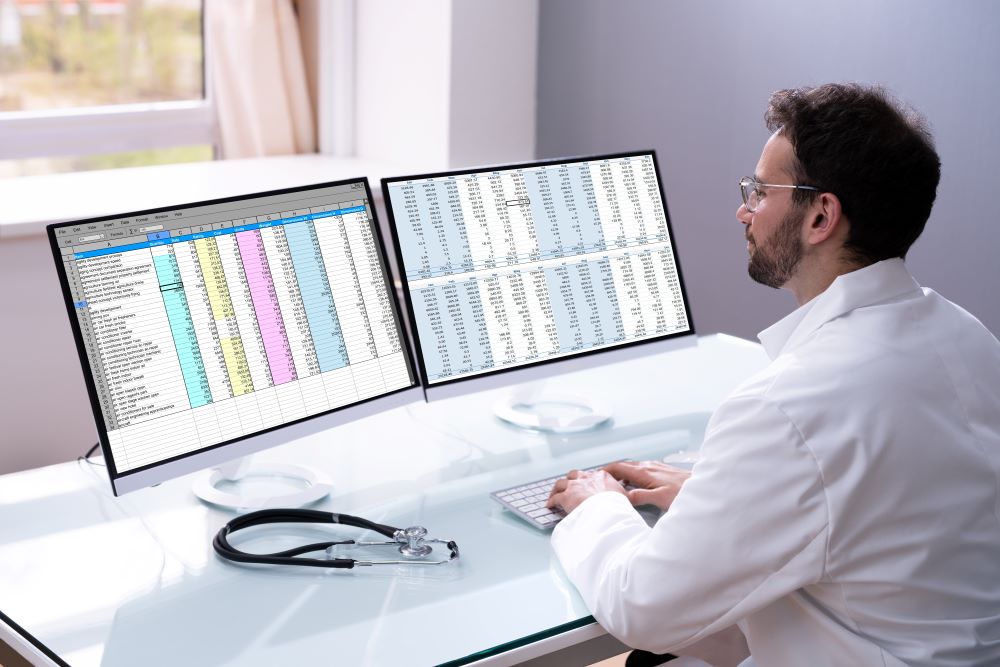Medical Coding: How to Balance Accuracy and Productivity

Did you know the success of your medical practice hinges on the accuracy of your coding? Discover the delicate balance between speed and precision in medical coding and understand why getting it right is more crucial than ever.
Medical coding is instrumental in linking provided services to financial compensation. Yet the demands of medical coding extend beyond data entry. The integrity of data and billing hinges on the accuracy of these codes. It’s not just about speed. If the coding is wrong, it can skew billing and cost a practice money. Medical billers and medical coders constantly grapple with the challenge of balancing precision with productivity to ensure both timely billing and the representation of clinical realities.
For more insights into streamlining your practice’s revenue cycle, explore our medical billing and coding services.
Understanding the Basics of Medical Coding
Medical coding involves translating the provided healthcare services into universal alphanumeric codes. These codes form a critical part of the medical claims and inform insurers about the illnesses or injuries patients have and the treatments they receive. As such, they’re crucial in determining the reimbursements healthcare providers collect from payors.
The process begins with the capturing of information. Providers record the details of the patient’s visit, including the diagnosis, tests ordered, and treatments provided. Medical coders then convert these details into standardized codes. The codes are universally understood, enabling clear and streamlined communication among healthcare providers, billers, and insurance companies.
Medical Coding Examples
Navigating the complexities of medical coding requires an understanding of the practical application of codes in real-world scenarios. This involves recognizing the differences between diagnosis vs. procedure codes:
- Diagnosis codes (ICD-10): A patient visits with persistent coughing and shortness of breath. After evaluation, the physician diagnoses them with acute bronchitis, an illness coded as J20.9 in the ICD-10 system. This specific code — representing an instance of acute bronchitis without further specification — must be accurately applied to justify proper billing and treatment records.
- Procedure codes (CPT): Consider a scenario where a patient requires a knee replacement. The medical coder would use the CPT code 27447 for “arthroplasty, knee, condyle, and plateau; medial and lateral compartments with or without patella resurfacing (total knee arthroplasty).” Correct usage of this code is crucial for the healthcare provider to receive reimbursement from the insurance company.
These examples underscore the necessity of precision in selecting and applying codes. Ultimately, it directly impacts healthcare providers’ billing and compensation, as well as patient medical records.

How to Get Started with Medical Coding
Embarking on a career in medical coding is an accessible and rewarding journey — one that doesn’t demand years of training. Qualifications typically include a high school diploma, followed by specialized training in medical coding. This training often covers essential coding systems, healthcare terminologies, and relevant legal guidelines while providing the necessary preparation for certification exams.
Once certified, individuals must gain hands-on experience. Numerous job opportunities are available in a diverse array of healthcare settings, including hospitals, clinics, administrative support centers, or even remote telecoding positions. Since medical coding is ever-evolving, continuous education is paramount.
TruBridge Medical Coding solutions support career growth in medical coding.
Balance Accuracy and Efficiency
The way healthcare organizations handle medical coding can make a big difference in their financial success. It’s imperative to regularly review and improve coding practices. If needed, consider outside help to ensure you’re getting the optimal results for your billing. Start with specific medical coding examples relevant to your organization, become familiar with best practices, and strive for a mix of both accuracy and efficiency in documenting codes correctly.
Learn the impact of accurate medical coding on revenue.






